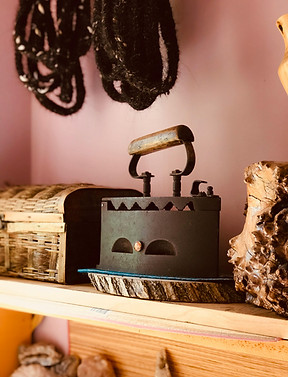
ABOUT FLATIRONS
Exploring the origins of flatirons

"Flat iron" and "flatiron" can refer to the same thing: a device used for straightening hair; or an old-fashioned, non-electric clothes iron. Additionally, "Flatiron" can refer to the Flatiron Building in New York City, which is a triangular building named for its resemblance to a clothes iron; or the Boulder Flatirons in Colorado, a rock formation on the west end of town.

TYPES OF FLATIRONS
Antique clothes irons are often referred to by several names that reflect their historical context and design:
-
Sad Iron: This is a common term for antique irons, derived from the Middle English word "sad" meaning "solid" or "heavy." Sad irons were typically made of a solid piece of cast iron and could weigh a considerable amount.
-
Flatiron or Smoothing Iron: These are more general terms for early irons that had a flat, solid metal base and a handle. They were heated over a fire or stove.
-
Tailor's Goose or Goose Iron: This type of flat iron is named for the distinctive goose-neck curve in its handle, often used by tailors.
-
Box Iron or Charcoal Iron: These irons had a hollow base where hot coals or a heated metal slug could be inserted, allowing the handle to stay cooler. Some variations were called chimney irons if they had a funnel to release smoke.
-
Ox-Tongue Iron: This refers to a type of box or slug iron named for the particular shape of its metal insert (the slug), which was heated and placed inside the iron.
These terms highlight the variety of designs and heating methods used for clothes irons before the advent of electricity.

CONTACT US
Say hi ... or get tips on what to do or where to stay when visiting Hot Springs, SD or the Black Hills.
DO NOT offer to "improve" our site or to work on our SEO. Those kinds of messages are tacky and spammy.














